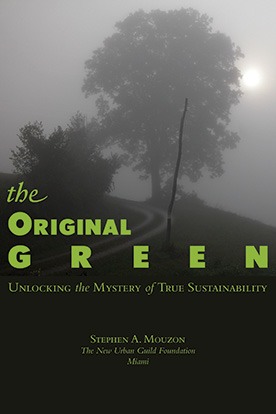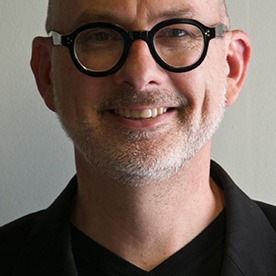
Today, it seems as if every company in the USA is in the process of proving how their products are green. I observed a similar phenomenon traveling in Europe nearly a decade ago. Nobody wants to be left out of the green stampede...why would you want to be the last company in the country that can’t say “our product is green?” In the building industry, there is green timber, green steel, green concrete blocks, etc... even green foam. Each claims their product is the most sustainable way to build.

It likely will not be long until someone claims that asphalt is green... oh, wait, it appears that they already have! No PhotoShop here!
All humor aside, there is a fundamental problem with this situation: what is a company to do? Is it not natural to tout the sustainable aspects of one’s product? And is it not proper to hope that the newfound concern with sustainability might spur companies to actually make their products more sustainable?
These are reasonable things to hope for, but the fundamental problem is this: how do you discern fact from fiction when everyone is beginning with their product and ending with sustainability? A classic example is the Congress for the New Urbanism: the New Urbanism has arguably been accomplishing more to change people’s lives in order that they live more sustainably than any other group dealing with the built environment over the past twenty-five years. While other groups have been doing good work getting people to change their light bulbs, the New Urbanism has been enticing people to actually move to places where you can walk to work, to shop, to school, or to play. I personally moved to Miami Beach, which is a highly compact, mixed-use, and walkable place, which is exactly the sort of place the New Urbanism promotes, in 2003. I went from driving 35,000 miles per year in my car (and 15,000+ more miles in Wanda’s car) to driving only 8,000 miles per year in our single car (we got rid of the other one, because the battery would run down in the months we weren’t driving the second one.) So our net reduction in driving is about 84%. If we were trying to get the same carbon reduction by driving a more efficient car as we do instead by driving 1/6 as much, we’d have to have a car that’s 6 times as efficient in order to stay in the auto-dominated place we were. In other words, we’d have to have a car that got 150-180 miles per gallon to have the same effect.

Auto efficiency advocates are doing a good thing, but in their wildest dreams, they only can hope to get a 7.5% fuel efficiency increase in the American fleet. Meanwhile, our moving to a place that embodies New Urbanist principles resulted in the equivalent of a six-fold, or 600% increase. That’s eighty times as much as the wildest dreams of the fuel efficiency advocates. Let that sink in... eighty times as much. Clearly, nothing can even come close to reducing as much of the carbon footprint of the places that we build as building based on New Urbanist principles. Nothing else comes close.
New Urbanist planners and architects have been advocating these principles since 1980, with a few predecessors such as Christopher Alexander beginning even before that. Yet with a track record this long and this strong, the New Urbanism finds itself in exactly the same situation as every other entity out there right now: they’re having to make the case that “hey, we’re green, too!”... starting with what they do (urbanism) and ending at sustainability.
The Original Green changes the entire direction of the argument: it begins with sustainability and ends with principles and products, rather than the other way around. And by “sustainable,” we mean “can you keep it going for a very long time?” This is plain-spoken, plain English sustainability, not marketing fluff.

But what does it mean? First, it is clear that we must build sustainable places before we can even think about building sustainable buildings. What makes a place sustainable? First, you must be able to eat and drink there: it must be Nourishable. Next, you must be able to get around in a number of ways, including by human-powered ways such as walking and biking, because we don’t know what the future of mechanical transport will be. In other words, the place must be Accessible. Next, in an Accessible place, we must be able to access the daily necessities and services of life, so the place must be Serviceable. Finally, few people will live in a place very long if they are constantly in fear for their life or safety, or that of their children, so the place must be Securable.
Once the place is sustainable, then we have a meaningful conversation about sustainable buildings. Clearly, if a building cannot be loved, it won’t last, so the first foundation is to be Lovable. Once it is Lovable, then it makes sense to talk about buildings that are Durable enough to last for a very long time. If they are Lovable and Durable, then their interiors must be Flexible enough to accommodate many uses over the centuries. Finally, if buildings are Lovable, Durable, and Flexible, then it is meaningful to discuss how Frugal they are.
Changing directions to begin with sustainability and end with the things that support sustainability produces some expected results, but it also produces some surprises. Stay with us as we discover some of each... and by all means, please join in the discussion.
~ Steve Mouzon
+150+


